When she first stepped on the downtown hillside property that overlooks the city’s skyline about seven years ago, Andi Scull Cheatham, founder and executive producer of HOPE Events, faced barren walls, poison ivy, thorns and old mattresses.
“It was a mess,” she said. “Definitely not approachable.”
But it was where — after days of weed-whacking the property — a temporary art experiment began, eventually becoming the HOPE Outdoor Gallery. Today, the art park has elevated Austin’s street art and graffiti scene as well as become an integral part of the city’s creative spirit.
Austin architecture firm Chioco Design’s vision for the outdoor art gallery includes an expansive network of walls, which from above display the word “Hope.”
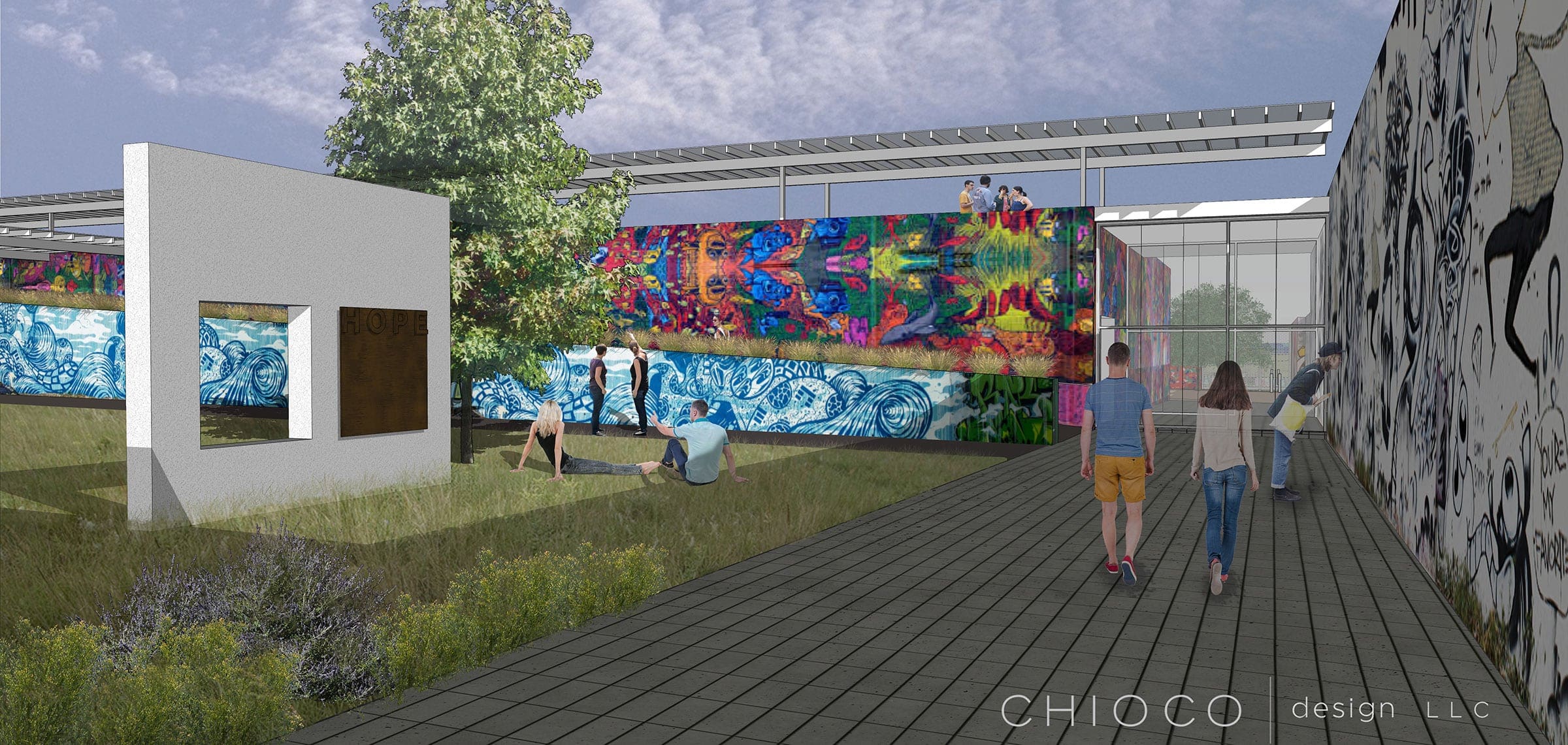
The vision for the 6-acre art park project at Carson Creek Ranch includes a series of walls available for artist installations designed by Jamie Chioco and Ben Dimmit of Chioco Design LLC, an Austin architecture firm.
Six years, dozens of marriage proposals and countless music videos, baby announcements and family portraits later, the HOPE Outdoor Galley is relocating to a permanent home near the airport at Carson Creek Ranch in 2018. The art park on Baylor Street will remain open through June.
Construction of the new, expanded 6-acre art park is expected to begin in early 2018 and wrap up by the end of next year. By June, HOPE is aiming to have enough adequate park and paintable spaces at the new location to open. “This is going to be a game changer for the arts community in Austin,” Carson Creek Ranch owner Joan Havard said. The proposed design at the new space would have a larger paintable wall surface of approximately 48,570 square feet.
“It’s been an incredible journey finding the perfect permanent home for this project,” Scull Cheatham said. “This new, evolved art park will be a special place for the community to call their own.”
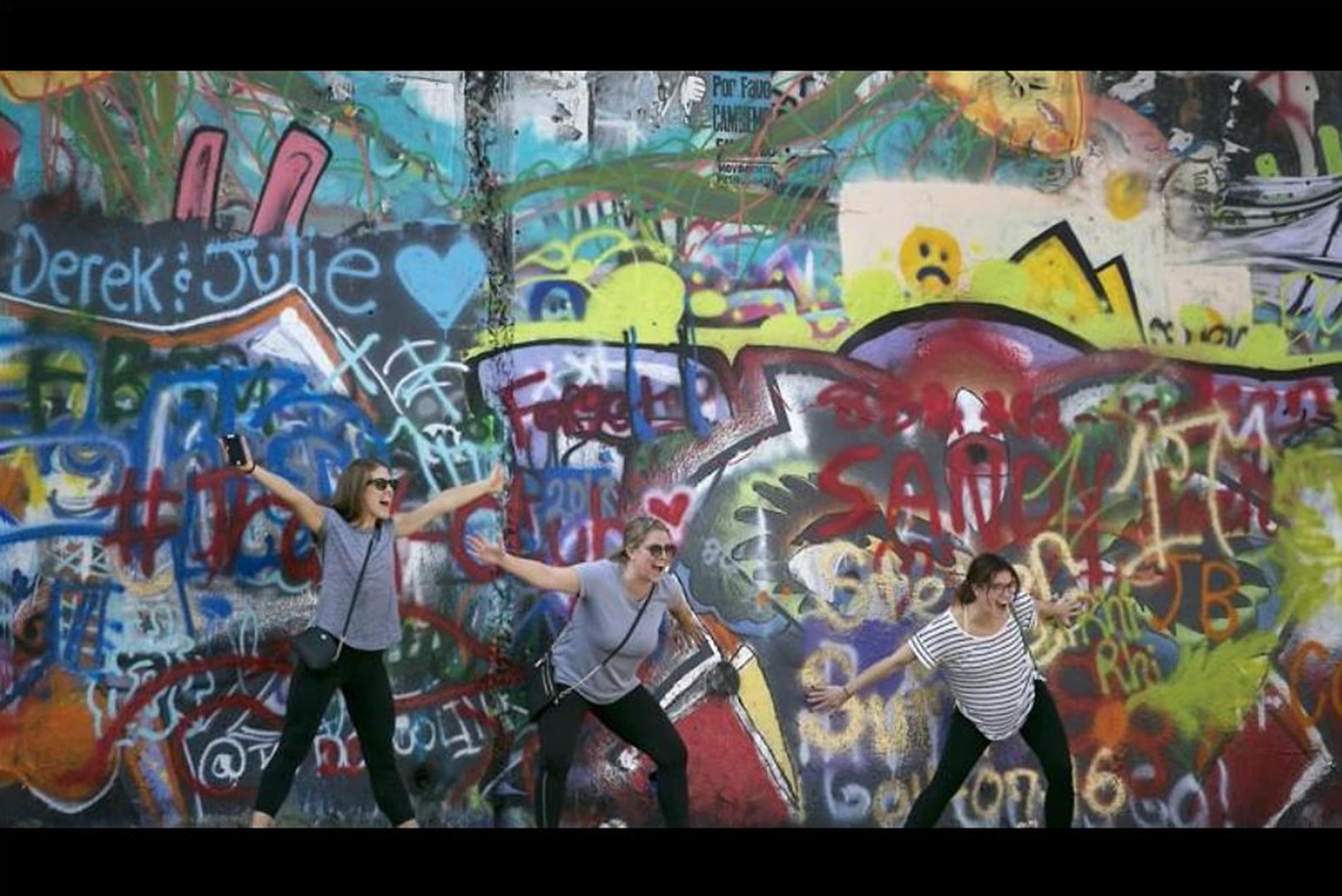
Above: A trio of friends pose for a photograph at HOPE Outdoor Gallery on Baylor Street. The art park launched during South by Southwest 2011 and will now move to a permanent location. /RALPH BARRERA
At Carson Creek Ranch, a 58-acre ranch on the banks of the Colorado River that hosts annual music festivals such as Euphoria and Levitation, HOPE plans to have extended wall space for artists; daily public open hours; art classes for youths and adults; lockable areas to protect the artwork; parking and restrooms.
Austin architecture firm Chioco Design is designing the project, which will feature an expansive network of walls that, from the view of a plane flying over Austin-Bergstrom International Airport, will display the word HOPE. The new outdoor gallery also plans to accommodate food trucks and a café, as well as shaded areas and benches. In early 2018, the nonprofit will launch a fundraising campaign to help fund the relocation.
By moving the private art park, which attracts an average of nearly 500 daily visitors, to a location that’s not as immediately accessible as its current location, Scull Cheatham said she hopes to reduce unwanted activity that occurs at the HOPE Outdoor Gallery, such as the tagging of murals, the extra traffic and trash accumulation.
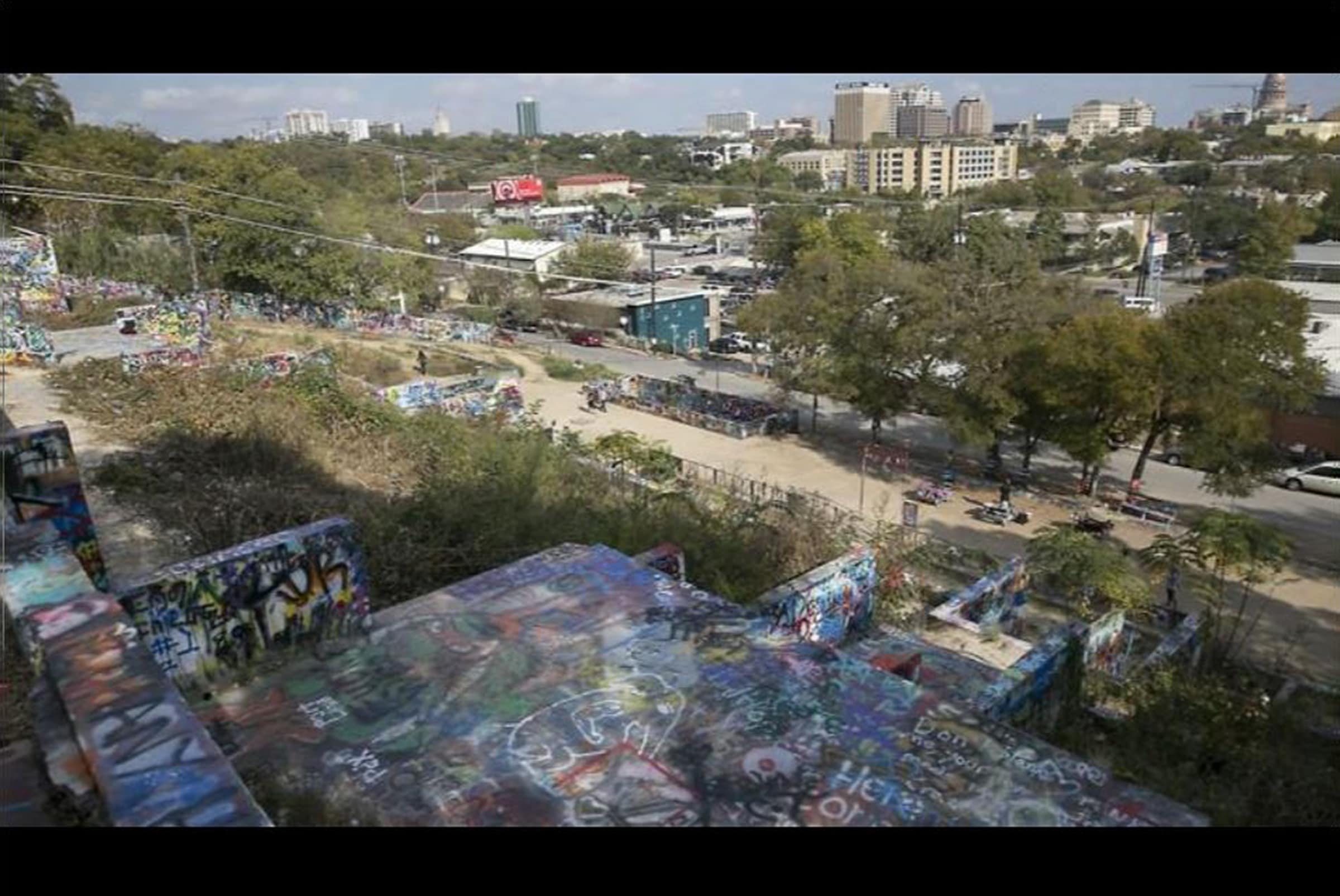 The HOPE Outdoor Gallery is slated for relocation and expansion to Carson Creek Ranch in 2018. / RALPH BARRERA
The HOPE Outdoor Gallery is slated for relocation and expansion to Carson Creek Ranch in 2018. / RALPH BARRERA
“It’ll be a destination, not a drive-by,” she said. “The community’s attraction to this art park is having a safe space to share ideas.”
But not everything in the art park, which has hosted more than 300 artists at its current location, will be brand new. The gallery will also bring one of the walls from its current location to Carson Creek Ranch as a memorial wall commemorating the art park’s roots, when it originally launched as a place where street artists and graffiti writers could legally practice their craft on underutilized walls and not be in fear or stressful conditions.
“The memorial wall is part of the art history of Austin,” Scull Cheatham said.
The HOPE Outdoor Gallery, which is managed by the nonprofit Helping Other People Everywhere, began looking for a permanent home in 2013 and drew interest from several groups, including the city of Austin. “It was a journey,” she said. “We always knew that (Baylor Street) was temporary, so by the time we started seriously looking at new locations, we knew what it needed based on years’ worth of data.”
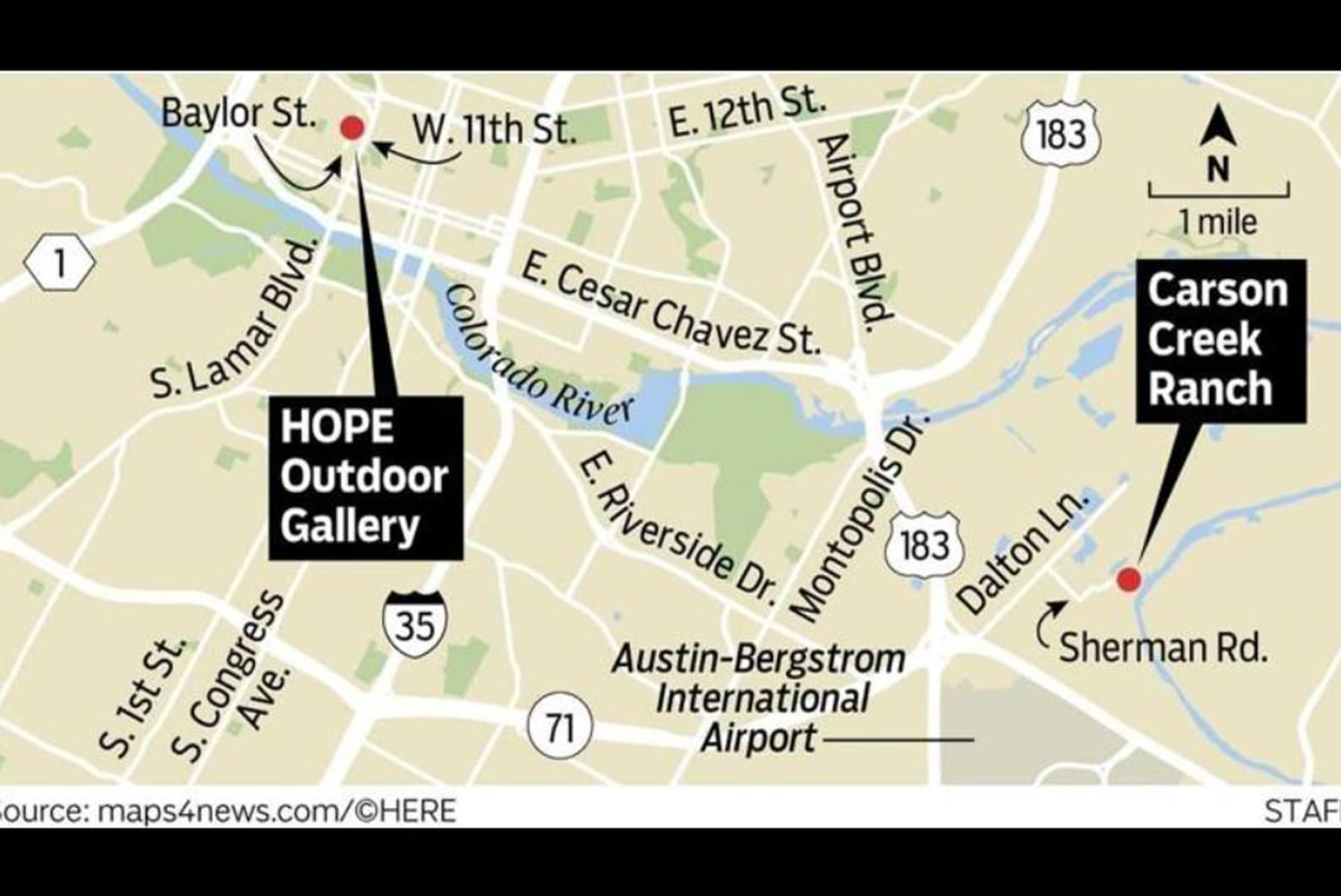
Above: The Austin art park HOPE Outdoor Gallery will relocate from downtown to Southeast Austin in 2018.
An art site is born
The HOPE Outdoor Gallery officially launched during South by Southwest 2011 with a mural by artist Shepard Fairey after receiving permission from the Baylor Street property owners — Vic Ayad, a founding principal at the investment firm Castle Hill Partners, and former owner and architect Dick Clark.
The plan then, Ayad said, was to use the site for about three months. The gallery grew out of “the ruins of a misengineered project from about 35 years ago.” Although the project failed, several walls remained standing on the property.
Ayad said he quickly sensed something special happening. From his office at the top of the hill, Ayad has enjoyed seeing the artwork come to life. “This is the closest thing that recalls places like the Armadillo World Headquarters,” he said.
Over the years, Ayad stopped the development of a high-end condominium project, took the property off the market, bought out his partner, paid the property taxes on the site and held onto the land until the gallery found an ideal fit for its permanent home.
Now, Mid-City Development, a locally owned real estate development firm specializing in urban, multifamily projects, will be the new owners of the Baylor Street property. Bryan Cumby, owner of Mid-City, has been working with Ayad and Scull Cheatham on the transition.
“The art park means something to everyone, not just the art community,” Scull Cheatham said. It’s what’s inspired HOPE, she said, to find the gallery a permanent home.
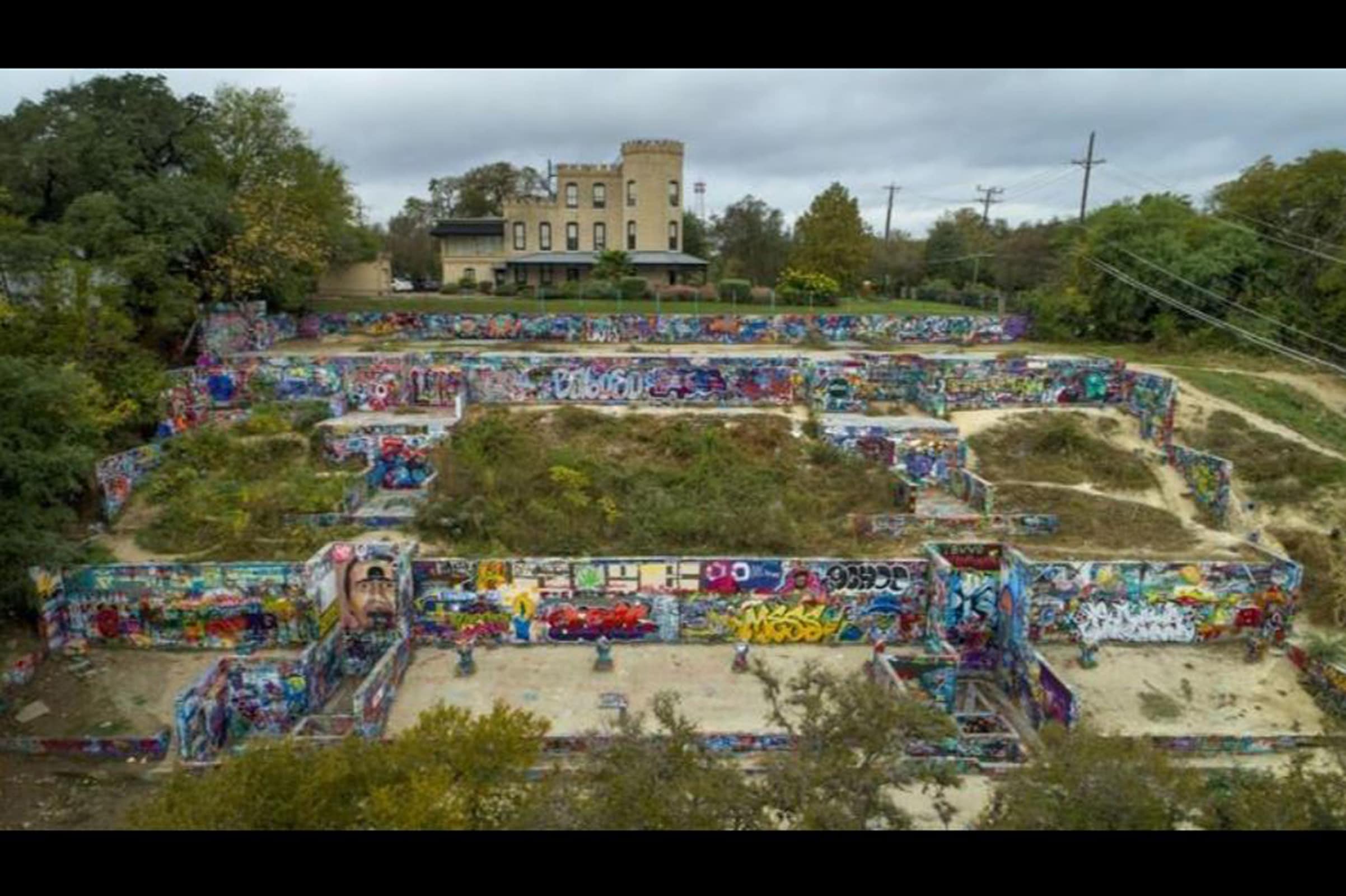
The HOPE Outdoor Gallery on Baylor Street will relocate and expand in 2018. / JAY JANNER
Distinguished alumni
The art park over the years has helped nourish both emerging talent and offered a place to showcase premier artists. Scull Cheatham describes it as having an open mic feel, like at a music or comedy open mic, where people sign up to perform but then every once in a while a big name will walk in to try out new material.
For teacher-turned-street artist Mike “Truth” Johnston, who began painting at the park as an emerging talent and now works as a professional artist, the park was an invaluable training ground.
“The HOPE Outdoor Gallery became our playground, our sanctuary,” he wrote in the recently released book about the art park, “These Walls Can Talk.” “Being involved in street art (typically a pretty secretive sub-culture because of legalities), I wanted to have this connection with like-minded souls. It was a blessing to finally be able to swap notes and walk this path of exploration with other creatives.”
For veteran artists like Nathan “Sloke One” Nordstrom, who first painted at the desolate site in 1994 before it was a gallery, getting the chance to showcase his high-quality graffiti work at the park presented a unique opportunity.
“Castle Hill quickly became my Hall of Fame,” Nordstrom wrote in the introduction for “These Walls Can Talk.” “The experience of painting on top of the hill, while enjoying the Austin skyline in the daytime legally, was new to me.”
Now, he said, the art park’s new chapter at Carson Creek Ranch “will benefit artists and the public by providing a unique place where creativity can grow and thrive.”